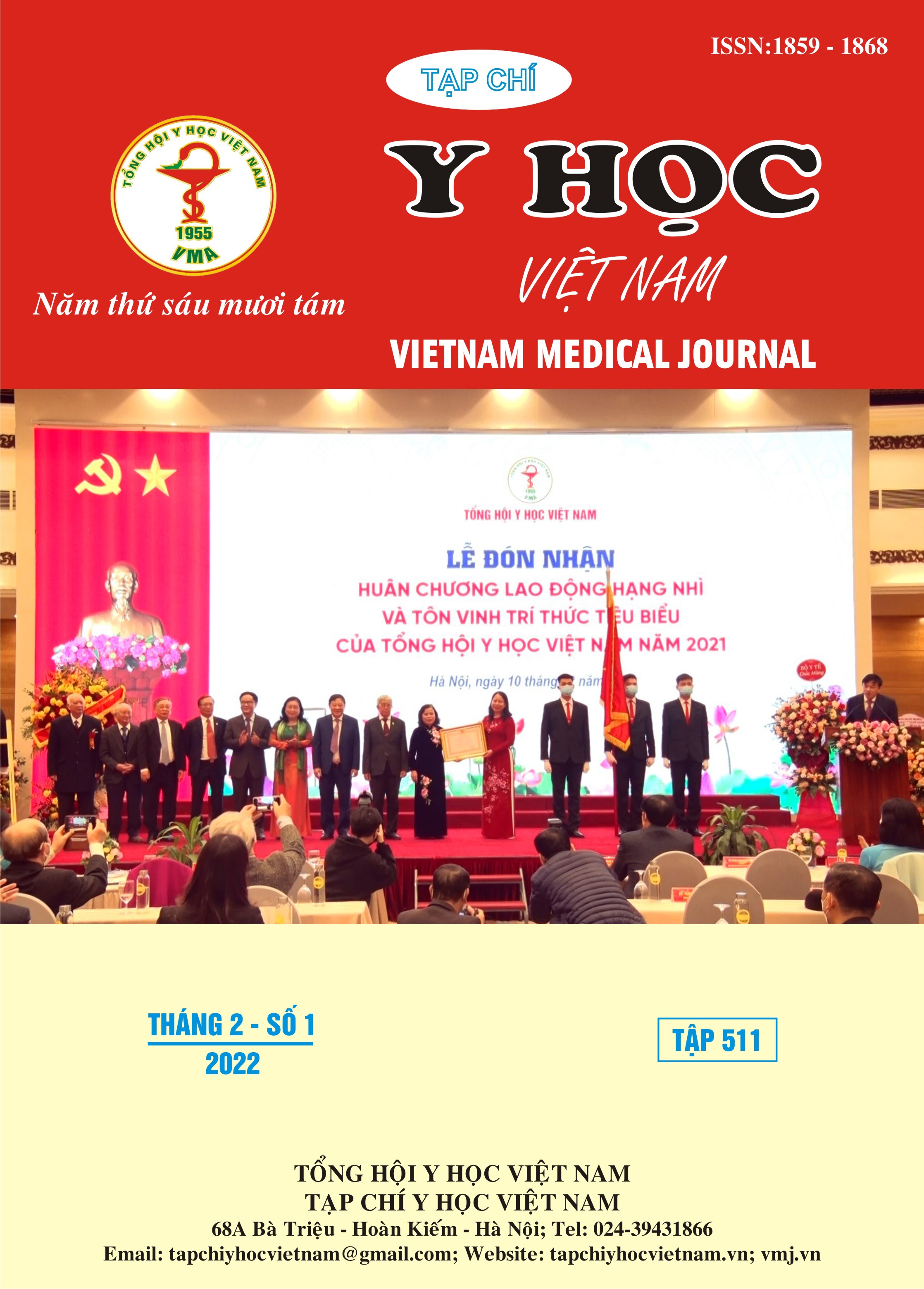TO ASSESS THE SURGICAL TREATMENT RESULTS OF BILATERAL CLEFT PALATE BY PUSH BACK TECHNIQUE IN NGHE AN OBSTETRICS AND GYNECOLOGY HOSPITAL IN 2018-2021
Main Article Content
Abstract
Objectives: Evaluate the results of wound healing and closure of the cleft after surgery for bilateral cleft palate and describe the clinical characteristics of bilateral total cleft palate surgically treated by push-back technique. Subjects-methods: a cross-sectional descriptive study combined with retrospective, prospective sample size of 38 patients according to the above selection criterias of the bilateral total cleft palate from January 2018 to August 2021 at the Department of Odonto-Stomatology, NgheAn Obstetrics and Children's Hospital. Results: Male 25 (65.79%); Female 10 (34.21%); In the age ≤24 months: 8 (21.05%) patients; Group >24-48 months: 60.53% (23 patients). Genetic causes: 18.42% (7 patients); mother with flu in the first stage pregnancy: 34.21% (13 patients); unknown cause: 47.37% (18 patients). Only 4 patients (10.53%) cleft palate. Cleft palate with cleft lip 34 patients (89.47%). Male group: cleft palate 12.00%; Cleft palate with cleft lip 88.00%. Female group: Cleft palate 7.69%; Cleft palate with cleft lip 92.31%. Dimensions of Cleft palate: 1-2 cm wide and highest in 30 patients (78.95%); Cleft palate >2 cm wide: 03 patients (21.05%). There were no postoperative complications in 34 patients (89.47%). Conclusions: The ratio of male/female: ≈ 2/1; Average age: 36.62 ± 20.90 months: Age group ≤ 24 months: 21.05%; group >24-48 months: 60.53%; group >48-<72 months: 15.79%; minimum age ≥ 72 months: 2.63%. Cause: sickness mother in the first stage of pregnancy: 34.21%; hereditary 18.42%; unknown 46.37%.
Article Details
Keywords
Bilateral cleft palate, cleft lip, surgery, children
References
2. Lê Đức Tuấn (2010), “Khe Hở môi, vòm miệng bẩm sinh”, Phẫu thuật hàm mặt, Nhà xuất bản quân đội nhân dân, tr. 89-101.
3. Lê Xuân Thu (2011), Nhận xét đặc điểm lâm sàng và kết quả phẫu thuật khe hở vòm miệng hai bên bẩm sinh theo phương pháp V- Y Veau-Wardill- Kilner, Luận văn bác sĩ chuyên khoa cấp II, Trường Đại học Y Hà Nội.
4. Võ Thế Quang (1982), “Khe hở vòm miệng”, Phẫu thuật tạo hình và tái tạo mặt, Nhà xuất bản Y học, tr. 316-322.
5. Lâm Hoài Phương (2007), “Khe hở vòm miệng”, Dị tật bẩm sinh vùng hàm mặt, Nhà xuất bản Y học, Hà Nội, tr.105-126.
6. Nguyễn Mạnh Hà, Lê Văn Sơn (1999), “Một số kinh nghiệm trong việc áp dụng kỹ thuật tạo hình vòm miệng bằng hai vạt chữ Z đổi chiều nhau”, Tạp chí Y học Việt Nam, số (240,241), tr.147-152.
7. Lê Đức Tuấn (2015),"Phẫu thuật khe hở vòm miệng bẩm sinh", benhvien103.vn.
8. Mai Đình Hưng, Nguyễn Khắc Giảng (1979), “Những dị tật khe hở vùng hàm mặt”, Răng hàm mặt, tập (II), Nhà xuất bản Y học, Hà Nội, tr.186-220.


